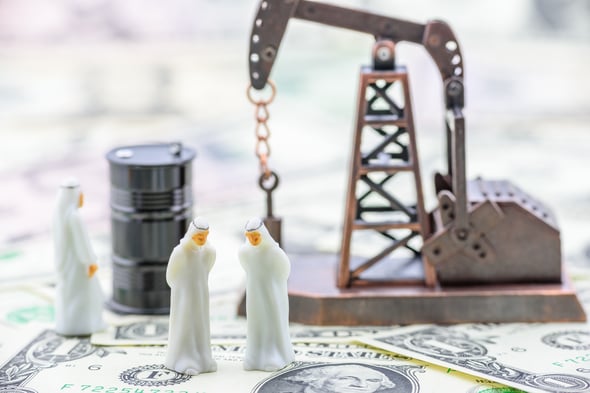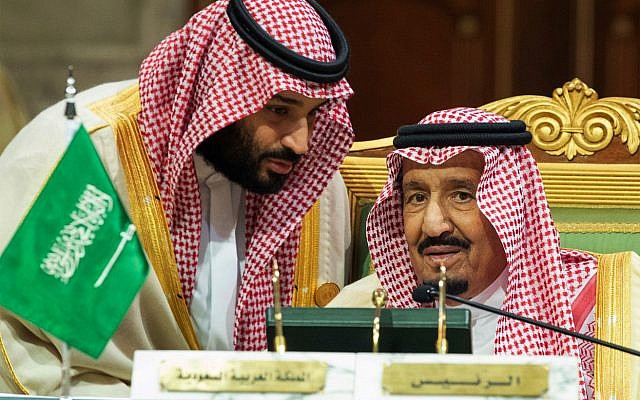Aramco is the world's largest oil company, but Aramco is also more than just an oil company; it's a beacon of light for the Saudi Arabian economy. Its Q2 net income nabs at 2018 levels--a time of former glory and its IPO--why?
How Aramco makes billions:

Saudi Aramco. It is massive. In fact, it is so immoderately large that it is hard to describe using words, but some facts should help get us started. Saudi Aramco:
- supplies one tenth of the world’s oil;
- generated a billion dollars per day in revenues in 2018;
- controls one fifth of global petroleum reserves;
- is over 10X the size of Exxon Mobil;
- has nearly as big an oil reserve as Venezuela.
Saudi Aramco is a special oil company. Aside from it being a state-owned company, it has lots of oil as previously showcased. In 2018, it was estimated that Aramco had an excess of 330 billion barrels of oil and gas in reserves. To add to the allure, Saudi Aramco can very easily extract oil—while most production costs seen at other conventional oil producers near $40 a barrel, Aramco undercuts costs by $20 to costs of $20-$25 per barrel.
This makes them a fierce competitor to new entrants and other oil giants. Lastly, the firm continues to see major payoffs. In 2018, the firm saw roughly $1B of revenue per day ($355B in total) and it saw operating income of $212B and net income of $111B, figures that speak volumes about its ability to extract oil from the ground in an efficient manner.
How did Aramco fair in Q2?

As you can imagine, a massive oil player like Aramco is affected by the price at which it can sell its barrels, and this year saw a major rise in… oil prices. The graphic directly above shows that Aramco in Q2 made a record profit, not seen since Q4 of 2018.
Results were therefore quite strong, and the firm reported a 288% increase in profits from the same quarter last year (2020 was also a terrible year for Aramco). The firm’s net income thus far this year was $47.2B which is a 103% rise over the same period in 2020.
The increase in both the quarter and H1 was primarily driven by higher crude oil prices, and improved downstream margins. As a result, the firm maintained a dividend of $18.8B in the second quarter which was in line with its target and while analysts expected the extra net income to ooze into higher dividends, Aramco decided to store the extra cash for spending elsewhere, perhaps in their ‘’Shareek’’ programme, to boost its domestic economy.
Covid-19 was particularly hard for Aramco, who posted a 44% fall in 2020 net income, a reality that added pressure on the kingdom’s finances, and especially, their initial Aramco project to use proceeds to diversify their economy. The firm’s debt has climbed as Saudi Arabia was hammered last year by a double whammy of low prices and sharp cuts in production.
Now, with the world re-opening, an OPEC meeting decided to raise output by 400,000 barrels per day, each month from August onwards, helping fuel a global economic recovery. Aramco is set to further gain from this arrangement, and see much better results than 2020 going into H2.
Government risk?

There is a clear overlap between country and company (Saudi Arabia Inc?) as discussed in IPO conclusions below. Saudi Arabia is one of the wealthier (top 20 worldwide economies), and more stable countries in the Middle East (which does not say much), but it derives 80% of its GDP from oil. A company that controls those oil spigots is a stand in for the entire nation and over the last few decades the Saudi budget has largely been tied and dependent to the cash flows it collects from Aramco. This means Aramco is exposed to both oil risk and regime change risk. However, it is unlikely and unreasonable to expect a high chance of regime change, say more than 20% chance, which according to professor Aswath Damodaran, would still yield a valuation of Aramco’s business close to its $2 trillion figure.
But government risk in oil companies is not new. Take Petrobas as an example. Brazil’s state-owned oil producer raised $70B selling 36% of the government’s stake. In 2010, Brazil’s oil sector represented about 10% of the country’s GDP and Petrobas used the proceeds to invest even more in oil extraction from the pre-salt layer (a layer further below the earth and harder to reach, but rich).
However, five years after the production targets and raising funds, the company’s performances have fallen short of expectations not to mention the political irregularities involved. It is however a far-reaching claim to make that Aramco is anything close to Petrobas both as a business and as a government backed entity. Aramco remains much larger and much more controlled by the kingdom than Petrobas was after its IPO making for different profiles.
Looking back: the Aramco IPO

- Proxy to the Saudi economy
- Should be seen as a long-term investment in oil
Al Mal Capital research has provided some interesting insight into the Aramco IPO and has offered some conclusions that are still relevant to the stock today in 2021. The Aramco IPO was closely intertwined with developments in the domestic economy and therefore investors should look at the Aramco stock as a direct proxy for the Saudi Arabian economy. Conversely, the pace of economic processes and reform, things like job creation and stimulus packages will see itself priced into the stock.
But further even, the IPO reflected a more deeply anchored question about the future role of the Saudi energy sector. The Saudi family leadership believes that oil should be treated as an investment. In other words, oil should not be seen as a major source of fixed income, a departure from previous thinking when the oil sector was seen as a major source of income, as a sort of economic bedrock. This new way of thinking is quite forward looking. It implies that the success of the stock is in some way linked to the quality of the proceed’s allocation in the Saudi economy.
Caveats for Aramco investors

1. Big dividend stock
2. Big Oil companies under pressure
3. Poor liquidity
Depending on the sort of stock you are looking for, a dividend stock like Aramco might be a decent idea. In fact, if you are seeking a fixed income investment this could work like a retirement alternative. Afterall, the idea of this IPO is to provide a sort of public investment fund to Saudis, so why not you, too?
However, assuming you are a retail investor or even a larger player, sitting around a stock waiting to receive payment could just tack on a concurrent tax burden, not to mention having to convert your currencies thereafter, which might just mean investing elsewhere is a better use of time.
This company seems unbreakable. It has massive cashflows, a quality offering, and lots of pricing power all great attributes that successful companies typically tend to have. But not so fast… Big oil has a sort of target on its back, or at least it does in Western countries.
It is unclear the level of risk that Aramco will be able to take on and for how long. Unfortunately, Aramco might end up becoming a hugely politicized investment—not to forget one invests directly in the Saudi royalty regime which could change (though this is not the most likely scenario).
Lastly, the stock was not listed on a large exchange as expected by many research hubs, an exchange like New York or Tokyo. Instead, the owners decided to raise funds at home (on the Tadawul), in a market that as price caps (prices can’t rise more than 10% in a day) and low liquidity. This is yet another burden foreign investors must consider.





